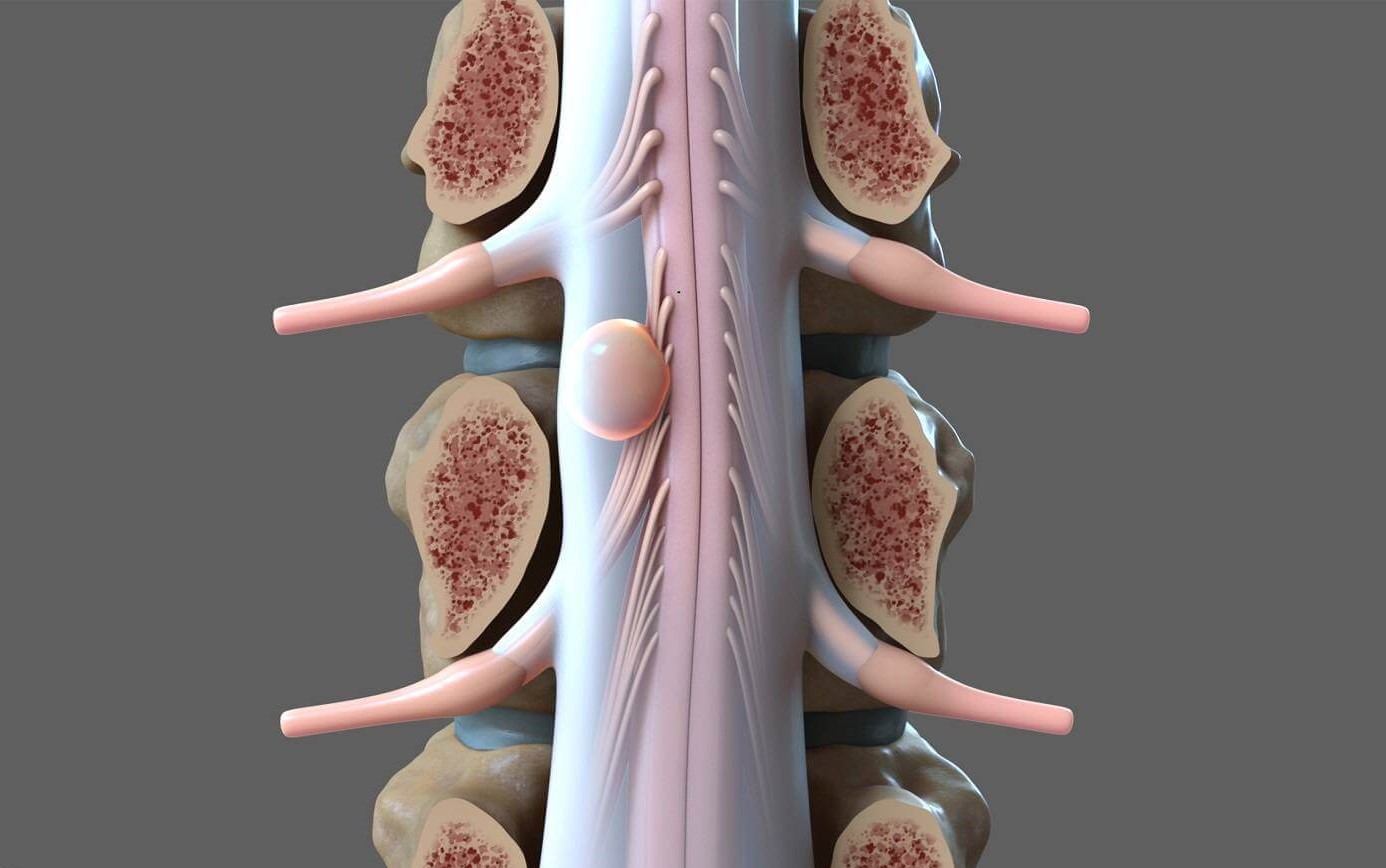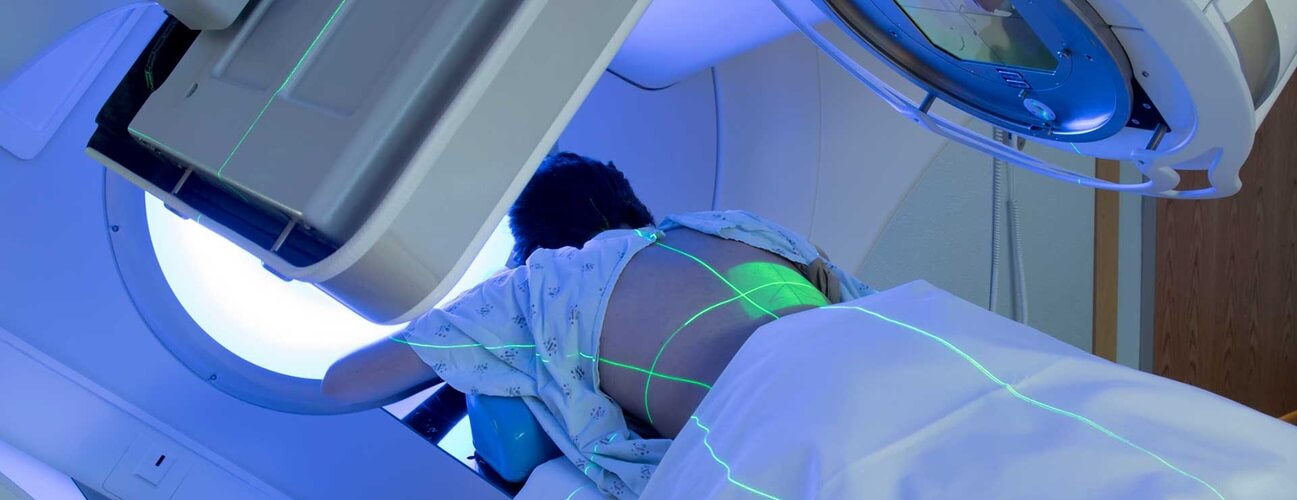Calls for Ukraine
Calls for Europe
Calls for USA

Spinal cord tumors are rare tumors of the central nervous system. They can affect the spinal cord directly, its membranes, or the spinal nerves. Early diagnosis is an important factor in the successful treatment of spinal cord tumors. Therefore, it is important to know what they are and how they manifest themselves. The MedTour team has collected for you the most up-to-date information about spinal tumors, their symptoms and signs, as well as treatment methods. We will also help you find the best clinic and doctor specializing in the diagnosis and treatment of central nervous system tumors.

The cause of most spinal tumors is currently unknown. Primary neoplasms can be caused by certain genetic syndromes. Scientists suggest that:
Spinal cord lymphomas are usually seen in patients with suppressed immune systems. Most extradural tumors arise from metastasis, most commonly from breast, prostate, lung, and kidney cancers.
Symptoms of spinal tumors are often nonspecific, which is why they are often diagnosed at a late stage. The main manifestations of the disease are caused by compression of the spinal nerves and weakening of the spinal structure. When visiting a doctor, patients most often complain of back pain. Other common symptoms include:
In later stages of the disease, bowel or bladder incontinence may occur. Children experience spinal deformities such as scoliosis.
Diagnosis of spinal cord tumors is difficult, primarily because symptoms often mimic more common and benign degenerative diseases of the spine. Therefore, it is important that patients are examined by an experienced physician. Leave a request in the feedback form to receive a free consultation. The MedTour coordinator will help you select an experienced doctor who will conduct a comprehensive diagnosis and prescribe the correct treatment.
The main symptoms to watch out for include:
It is important to understand that these symptoms do not necessarily indicate the development of a spinal cord tumor. They are also specific for other, less serious diseases. The correct diagnosis can only be made by an experienced doctor after a thorough medical examination.

Back pain due to a spinal cord tumor can manifest itself in various ways and depends on the specific location and size of the tumor. Symptoms can vary and each person experiences them differently. Some of the common manifestations of spinal cord cancer back pain include:
It is important to remember that these symptoms are not specific to a spinal cord tumor and may be associated with other medical conditions. If you suspect you have a spinal cord tumor or are experiencing similar symptoms, it is important to see your doctor for an accurate diagnosis and treatment. Leave a request in the feedback form, and the MedTour coordinator will help you find an experienced specialist.

Tumors of the spinal cord are called intradural. This means that they develop directly in the spinal cord or in its lining. Further, according to localization, doctors divide them into intramedullary and extramedullary.
Intramedullary tumors affect the spinal cord. Among all primary tumors of the central nervous system, they occur in 2-4% of cases. In adult patients, they account for approximately 20% of spinal canal tumors. In children they develop 2 times more often. Histopathologically (cellular composition) are identical to intracranial tumors.
The most commonly diagnosed type of cancer in this group is ependymoma. In adults, it accounts for 50% of all intramedullary tumors. The following are:
Extramedullary tumors develop in the protective covering of the spinal cord. Most often they are benign. The most common neoplasms in this group include:
Both the spinal cord and its lining can be affected by metastases – cancer cells that have spread from other areas of the body.
As mentioned above, meningiomas, schwannomas and neurofibromas are among the most common non-cancerous tumors of the spinal cord. Although the diagnosis of a benign tumor brings relief, patients still require appropriate treatment.
Even though non-cancerous tumors do not spread to surrounding organs and tissues, they still cause quite serious health problems. These types of tumors are usually associated with paresthesia: numbness or painful tingling in various parts of the body. Some of them are also characterized by a progressive weakening of muscle strength, followed by paresis and even paralysis.
The advantage of treating benign spinal tumors is that they do not require chemotherapy or radiation therapy. Most often, doctors prescribe corticosteroids to reduce inflammation, pain, and swelling. If the tumor causes severe compression of the spinal cord or its roots, surgery is performed.

If symptoms of spinal cord tumors are present, a doctor will listen to a patient’s complaints and check a patient’s medical history for other conditions that may cause similar symptoms. The physical examination involves a standard neurological examination, which checks:
If your doctor suspects a tumor, he or she may recommend x-rays of the spine and other diagnostic tests. These include:
Sometimes a doctor may recommend other diagnostic tests, such as bone scintigraphy. This method determines the extent to which cancer cells have spread throughout the body.

This is a procedure performed to remove a tissue sample from a tumor for further examination. It plays a key role in diagnosing and determining the nature of the pathological process. During a biopsy, the doctor inserts a thin needle into the tumor area, guided by ultrasound, computed tomography, or magnetic resonance imaging for precise positioning.
Once a tissue sample is received, it is analyzed. Studying the cellular composition makes it possible to determine whether the neoplasm is malignant or benign. Spinal cord biopsy is an important step in making an accurate diagnosis and planning optimal treatment for patients with spinal tumors.
For benign and malignant primary tumors located outside the spinal cord (extramedullary), doctors usually recommend surgery. However, some intramedullary tumors cannot be removed without significant damage to the spinal cord. In these cases, radiation therapy is used to slow down the growth of the tumor. Currently, modern technology is used for this purpose – CyberKnife. It allows radiation to be focused on the pathological focus without affecting healthy surrounding tissue.

To relieve pain or other symptoms by reducing pressure on the spinal nerves, surgical removal of the vertebrae is sometimes performed. Chemotherapy is used for certain types of malignant spinal cord tumors, usually after surgery.
Treatment for secondary tumors depends on the type of cancer that has spread to the spinal cord. However, the highest priority technique remains radiation therapy, which helps reduce the size of the tumor and reduce pressure on the spinal cord.
When administering radiation therapy, care must be taken to limit possible damage to the surrounding normal tissue of the spine. Over time, such damage can progress and be irreversible. The spinal cord is more sensitive to the effects of radiation than brain tissue. In particular, the thoracic segments of the spinal cord in the region of the ribs are most sensitive to the effects of radiation, where about half of all tumors occur.
For all types of spinal cord tumors, corticosteroid medications may also be prescribed to reduce swelling of the spinal cord. In addition, physical therapy may be needed to help restore muscle strength after radiation therapy or surgery.

Surgical removal of a spinal cord tumor is a procedure in which a doctor removes the lesion from the patient’s spinal cord. The process can be performed openly – through an incision in the skin (open surgery) or using endoscopy – through a small puncture using an endoscope and microsurgical instruments.
During surgery, the surgeon aims to remove the tumor in a manner that minimizes damage to healthy spinal cord tissue. Depending on the type of tumor and the extent of its spread, complete or partial surgical removal is performed. After surgery, the patient needs a rehabilitation period to restore normal functions.
Survival rates for spinal cord tumors vary greatly depending on the type of cancer, its stage, and how far it has spread. Individual characteristics, such as the patient’s age at diagnosis, also play an important role.
According to the American Society of Clinical Oncology, the average five-year survival rate for patients with a malignant spinal cord tumor is 36%. 10-year survival rate is about 31%.
These are very average numbers. Timely diagnosis and correctly prescribed treatment play an important role and can not only improve the quality of life, but significantly prolong it. Therefore, you should be careful when choosing a clinic and doctor for the treatment of spinal cord tumors.
MedTour company cooperates with the best oncology centers around the world. We will help you choose a clinic specializing in neurosurgery for spinal cord tumors. Any destination is available to our patients – Turkey, Germany, Spain, Italy, South Korea and other countries. The MedTour team will organize treatment for you at the clinic and help resolve all logistical issues – booking air tickets, transfers, hotel accommodation, accommodation of accompanying persons, provision of an interpreter and others. Our goal is to make your treatment abroad as comfortable and safe as possible.
The MedTour platform contains information about leading doctors who specialize in neurosurgery and conservative treatment of spinal cord cancer. These are world-renowned specialists. Leave a request in the feedback form and the MedTour coordinator will help you choose the best doctor. He will also help organize a consultation and tell you what medical documents you need to collect before talking with your doctor.
Please rate the work of MedTour
